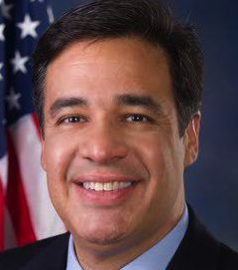
Idaho’s U.S. Rep. Raúl Labrador is 100% right on this. There will never be a constitutional amendment because the small states would be telling the bigger states to take over. That’s why we have an electoral college, that’s why each state has two senators, …
Some Americans are so disappointed by the result of the election that they call for abolition of a 229-year-old institution that has kept our nation strong and united, the Electoral College.
How can it be, they ask, that Hillary Clinton received 2 million more popular votes than President-elect Donald Trump but lost in the Electoral College 306-232?
The answer is at the core of our great experiment in self-governance. The Framers intended to protect small states like Idaho, designing a system that dilutes direct democracy in favor of a stable constitutional republic. The result has been the most successful system of government in the history of the planet.
One of the final compromises of the Constitutional Convention in 1787 was the Electoral College. For most of the convention, the debate was chiefly between those who advocated state legislatures choosing the president and those who wanted Congress to do the job.
Eventually, Pennsylvania delegate James Wilson suggested that the people elect the president. That idea prompted a deal striking a balance between population and the states. Each state, regardless of population, would get two senators and two electors in the Electoral College, with additional electoral votes based on population reflecting seats in the U.S. House.
The Founders expressly intended to give the states a say in electing the president. That is precisely why 100 of the 538 members of the Electoral College are apportioned to states equally.
Knitting together the original 13 states demanded respect of state sovereignty. Otherwise, the three large states of Massachusetts, Pennsylvania and Virginia would have dominated the 10 small states and our great experiment might well have failed.
In the 2016 election, Clinton received 64.8 million popular votes, Trump 62.5 million. But her margin in the popular vote came from a single state – California – where she bested Trump by 4 million votes, 8.3 million to 4.3 million.
Without the Electoral College, California would have singlehandedly swung the election, thwarting the wishes of its sister states. Trump’s electoral victory was broad, carrying 30 states to Clinton’s 20 states and the District of Columbia.
Idaho has four electors. Taken together, Idaho, Montana, Wyoming, Nebraska and North and South Dakota have 21 electoral votes. Were the popular vote to decide the matter, these states would truly be irrelevant “flyovers” ignored by candidates spending virtually all their time on vote-rich California, Florida, Texas, New York, Pennsylvania, Illinois and Ohio.
I heard a great analogy about the Electoral College. Football games are not won by how many yards you run or how many first downs you make but how many touchdowns you score. As you can imagine, a team’s strategy for winning the game would be different if the rules changed to count the yards and first downs instead of the touchdowns.
Similarly, the strategy would change for campaigns if the result was based on the popular vote and not the Electoral College. Unfortunately, that strategy would include ignoring states like Idaho and paying all the attention to states like California. That would have dire consequences beyond campaigns, as big states would dominate policymaking to the detriment of Idaho and other small states.
The Electoral College ensures candidates listen to both Idaho farmers and Hollywood moguls. It is part of a constitutional fabric protecting minority rights. These include a bicameral Congress, the Bill of Rights, and a constitutional amendment process requiring ratification by three-quarters of the states. This outcome affirms the genius of the Framers, who established a system of federalism that makes America a great and diverse republic.